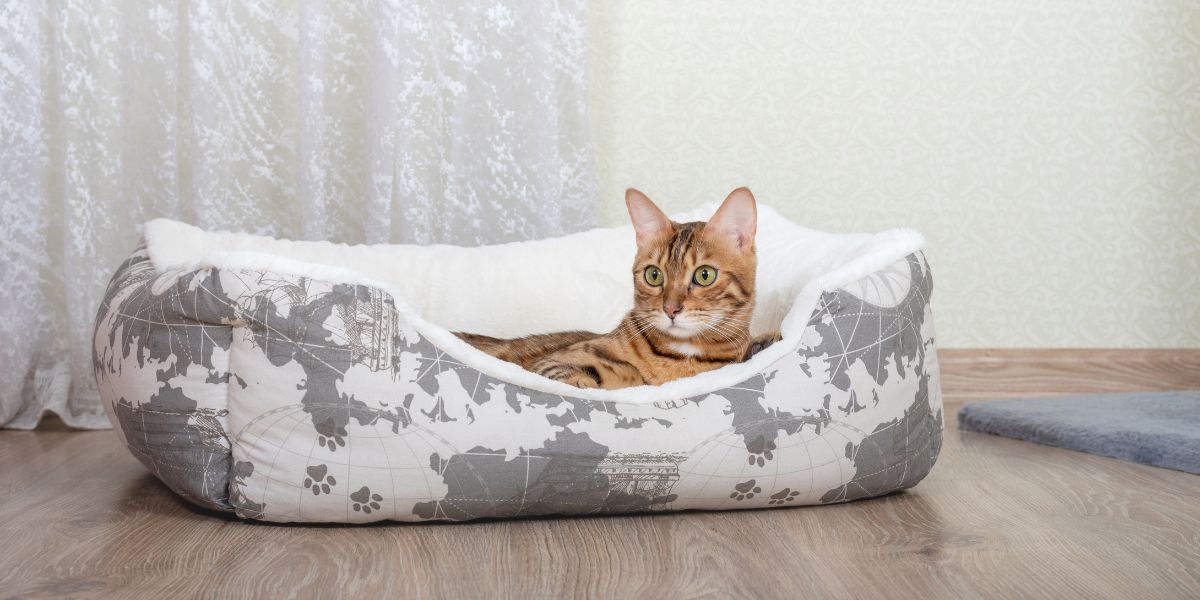
When it comes to ensuring your feline friend's comfort, understanding the subtle cues they provide is essential. From their unique sleeping positions to how readily they settle into their bed, these behaviors offer valuable insights into their level of comfort. However, there are additional factors to consider beyond just observing your cat's behavior. By paying attention to specific details like padding, support, and environmental factors, you can create a cozy oasis that meets your cat's needs. But what other aspects should you consider to truly ensure your pet's comfort in their sleeping space?
Observing Your Cat's Sleeping Behavior
To understand if a cat bed is comfortable, observe how your feline companion sleeps. Cats often display clear signs of contentment when they're comfortable. If your cat curls up in a tight ball with their tail wrapped around them, it indicates they feel secure and cozy. When they stretch out their body to its full length, it suggests they're relaxed and at ease.
Pay attention to whether your cat readily settles into the bed or if they seem restless and frequently shift positions. A cat that repeatedly kneads or circles around before lying down may be trying to find a comfortable spot. Additionally, observe if your cat spends extended periods sleeping in the bed or if they quickly abandon it for another sleeping spot.
Checking for Proper Padding and Support
Check the cat bed for adequate padding and support to ensure your furry friend sleeps comfortably and peacefully. When inspecting the bed, press down gently to feel if there's enough cushioning to support your cat's weight. Look for beds with soft yet firm padding that will contour to your cat's body, providing a cozy and supportive surface for resting. Ensure the padding is evenly distributed to prevent any uncomfortable pressure points.
Additionally, consider the bed's support system. Opt for beds with sturdy construction that won't sag or lose shape over time, providing consistent support for your cat. Beds with raised edges can also offer a sense of security and a place for your cat to rest their head while sleeping.
Considering Temperature and Ventilation
Considering the temperature and ventilation in a cat bed is crucial to ensure your feline friend stays comfortable and relaxed while resting. Cats are sensitive to temperature changes, so it's important to choose a bed that provides adequate insulation without making them too hot. Look for beds made from breathable materials like cotton or linen to help regulate your cat's body temperature. Beds with raised edges can also help trap heat, keeping your cat cozy.
Ventilation is another key factor to consider. Proper airflow in a cat bed prevents stuffiness and ensures your cat stays cool. Beds with mesh panels or elevated designs promote air circulation, preventing your cat from feeling overheated. This is especially important in warmer climates or during the summer months.
When selecting a cat bed, consider the room temperature where it will be placed. If the room tends to be colder, opt for a bed with thicker padding and cozy materials. In contrast, choose a bed with lighter fabrics and better ventilation for warmer environments. By prioritizing temperature and ventilation, you can provide your cat with a comfortable and inviting resting spot.
Evaluating the Size and Shape of the Bed
When assessing the comfort of a cat bed, pay attention to the size and shape to ensure your feline companion has enough space to stretch and curl up as they please. Cats enjoy having room to move around and adjust their sleeping positions, so a bed that's too small may limit their comfort.
Look for a bed that matches your cat's size, allowing them to fully stretch out without feeling cramped. Additionally, consider the shape of the bed. Some cats prefer round beds that allow them to curl up in a ball, while others may enjoy rectangular beds where they can stretch out fully. Observing your cat's sleeping habits can give you insight into what shape of bed they might prefer.
Looking for Signs of Contentment and Relaxation
To gauge your cat bed's comfort level, observe their demeanor for signs of contentment and relaxation. When your feline friend curls up in the bed with closed eyes and a relaxed body posture, it indicates they feel secure and comfortable.
Content cats may knead the bed or purr softly while settling in, showing they're at ease in their cozy spot. Look for your cat stretching out comfortably in the bed without any signs of restlessness or discomfort, such as frequent shifting or trying to find a better position.
A cat that naps peacefully in the bed for extended periods without frequent waking or moving around is likely enjoying the comfort it provides. Additionally, if your cat chooses the bed consistently over other spots in the house for resting or sleeping, it's a good sign that they find it comfortable and inviting.




